Some homeowners with high expectations for their home design are on the lookout for a bathtub that is both aesthetically pleasing and comfortable. For this reason, they often turn to the garden tub—a fantastic choice that represents luxury and relaxation in the realm of bathroom design. It has the ability to create a spa-like atmosphere, offering an experience of tranquility and indulgence. If this is your first time hearing about garden tubs, keep reading to discover everything you need to know about them!
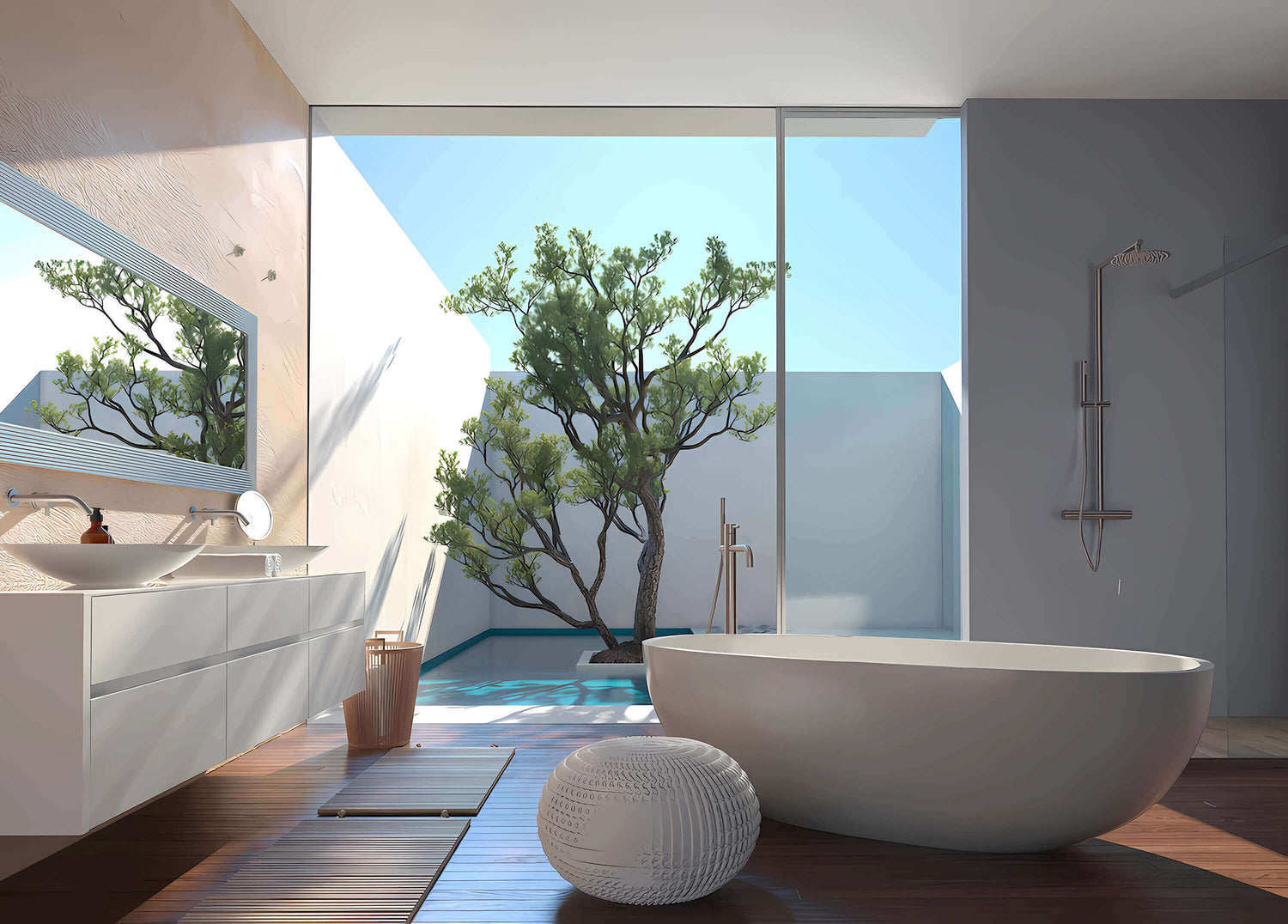
What is a Garden Tub
At its core, a garden tub is a variation of the soaking bathtub, known for its smooth, sleek appearance and deep, wide basin design. Not only does it serve as a decorative piece, but it is also designed for full-body immersion to provide a relaxing and indulgent experience.
Interestingly, the garden tub is not a modern invention; it actually has its origins in 18th-century France, where it was popularized by the elite aristocracy. These tubs were placed in lush gardens, allowing bathers to soak while enjoying the beautiful garden views, thus earning it the name "garden tub."
Today, while garden tubs have transitioned from outdoor spaces to indoor bathrooms—often placed by a window to allow bathers to enjoy the scenic views outside—many of their original features have been retained. For example, the oval design and enhanced UV resistance are still present in modern versions.
Further Reading: Garden Tubs vs. Soaking Tubs
Design Features of a Garden Tub
A key feature of the garden tub is its freestanding design, allowing it to be placed freely in the bathroom without the need for installation against a wall. This flexibility enables homeowners to arrange the tub according to their personal design preferences. Moreover, since garden tubs are often large and deep, the freestanding design highlights the tub’s elegant lines and adds a striking visual impact to the bathroom.
In terms of shape, garden tubs typically feature an oval-shaped edge, with some models designed with a more pronounced angle to better accommodate ergonomic needs and provide a more comfortable soaking experience. As a result, garden tubs not only provide smoother, more graceful curves that enhance the overall modern aesthetic, but they also conform better to the body’s natural curves. This design allows for a more relaxed and comfortable soaking position, enabling bathers to enjoy the view outside without feeling fatigued.

When it comes to size, garden tubs are generally larger than standard tubs, both in terms of overall dimensions and internal space. A typical garden tub might measure around 60"L*35"W*20"H. High-end models may be even larger. In fact, the size of a garden tub is similar to that of a whirlpool tub, but it is more aesthetically pleasing and lacks the added functionality of jets.
Material selection is also critical. As mentioned earlier, garden tubs are often placed near windows, which means they may be exposed to prolonged sunlight and UV rays. This can cause the tub to develop defects, especially during the summer months. For instance, acrylic surfaces may yellow when exposed to direct sunlight for extended periods, and metal materials may rust. To prevent this, garden tubs are commonly made from solid surface materials or Corian. While solid surfaces can still yellow over time, the discoloration can be removed by polishing. Corian, developed by DuPont, is a solid material made from acrylic plastic and hydrated aluminum oxide, offering enhanced UV resistance.
-
Mokleba 59" Oval Solid Surface Freestanding Soaking Tub
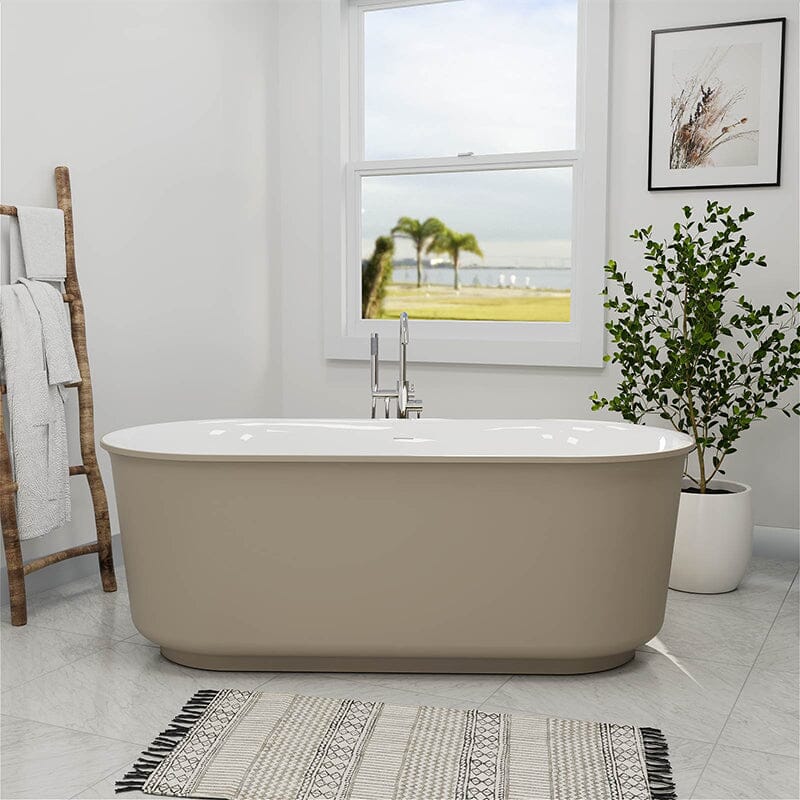
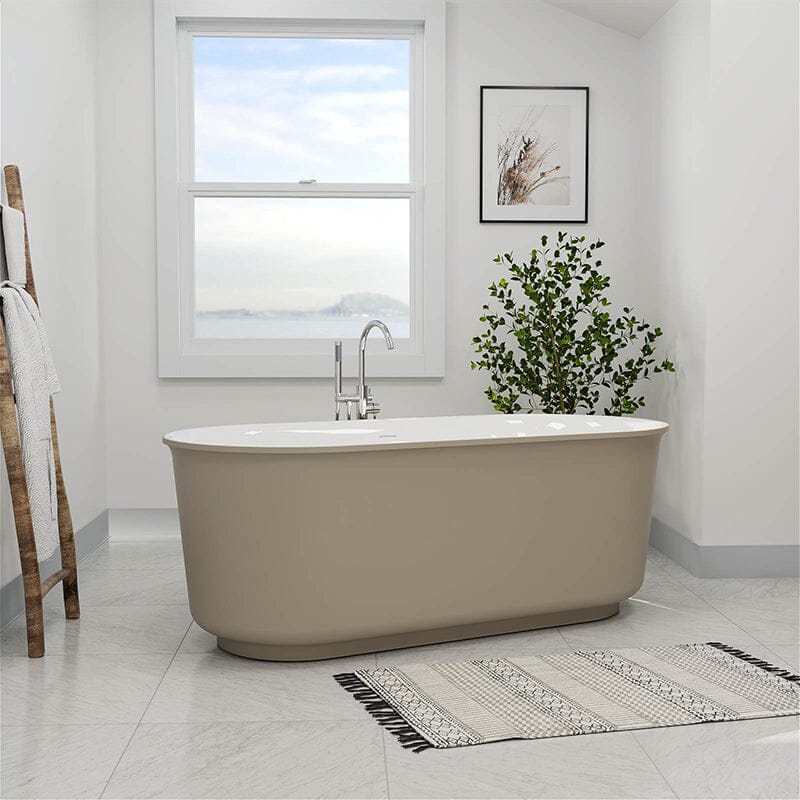 Mokleba 59" Oval Solid Surface Freestanding Soaking Tub
Mokleba 59" Oval Solid Surface Freestanding Soaking Tub- Regular price
-
From
$999.99 - Regular price
-
$1,699.00 - Sale price
-
From
$999.99
Quick view
-
59" Oval Solid Surface Brown Soaking Bathtub, Non-toxic, Crack-resistant, Household Chemicals-Resistant
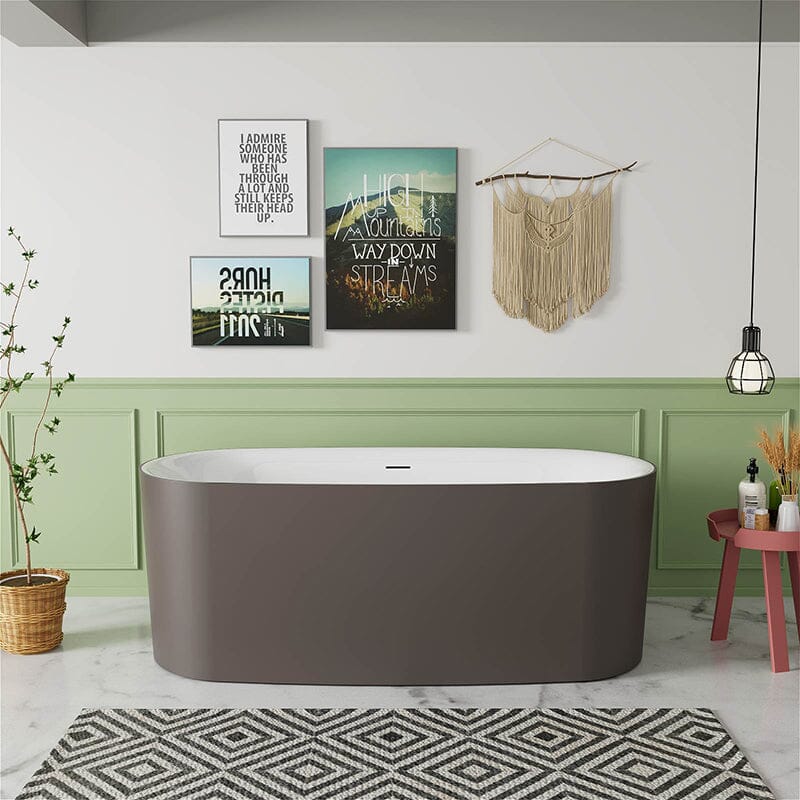
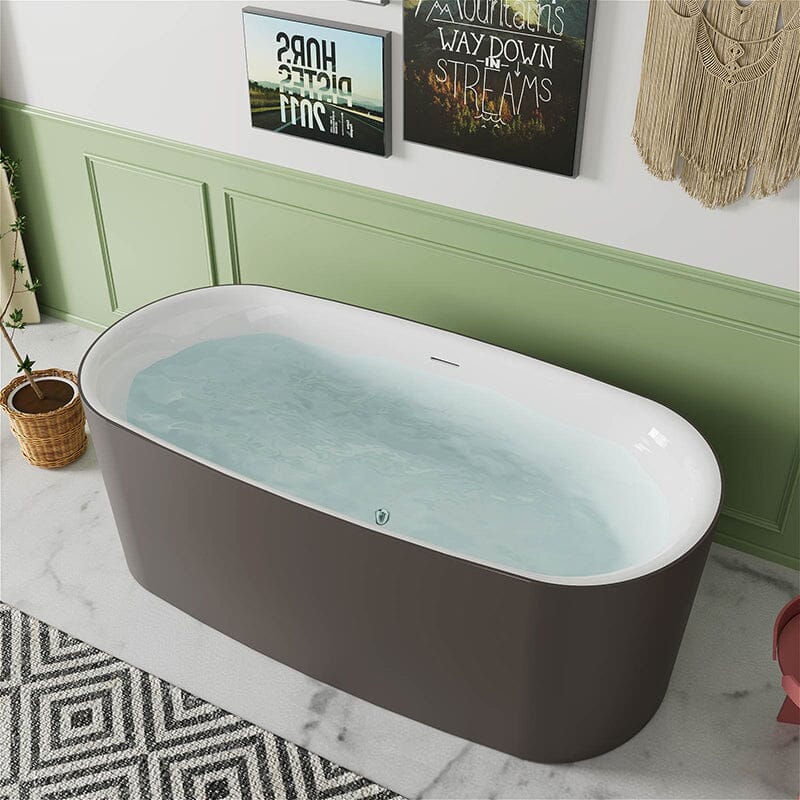 59" Oval Solid Surface Brown Soaking Bathtub, Non-toxic, Crack-resistant, Household Chemicals-Resistant
59" Oval Solid Surface Brown Soaking Bathtub, Non-toxic, Crack-resistant, Household Chemicals-Resistant- Regular price
-
$999.99 - Regular price
-
$1,699.00 - Sale price
-
$999.99
Quick view
-
61" Vintage Pedestal Tub Made from Premium Stone Resin

 61" Vintage Pedestal Tub Made from Premium Stone Resin
61" Vintage Pedestal Tub Made from Premium Stone Resin- Regular price
-
$2,399.99 - Regular price
-
- Sale price
-
$2,399.99
Quick view
-
63'' Solid Surface Stone Resin Oval-shaped Matte White Freestanding Soaking Bathtub with Overflow
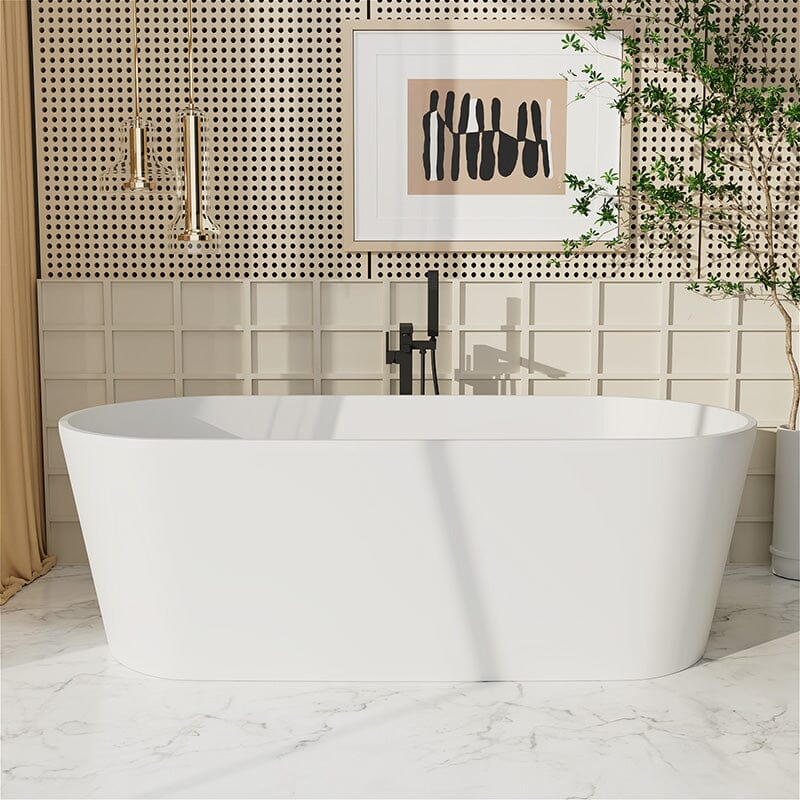
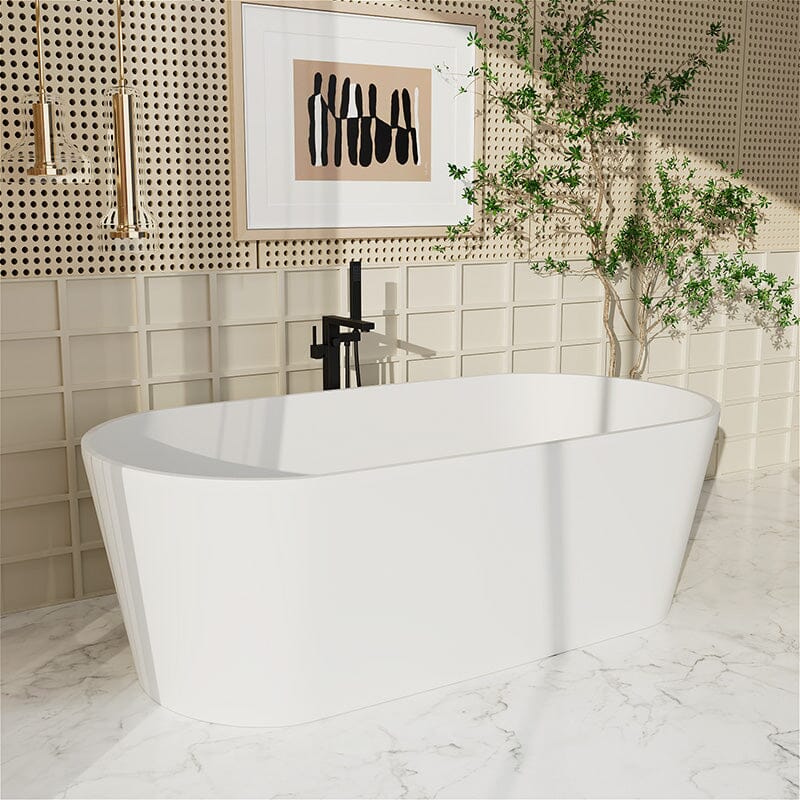 63'' Solid Surface Stone Resin Oval-shaped Matte White Freestanding Soaking Bathtub with Overflow
63'' Solid Surface Stone Resin Oval-shaped Matte White Freestanding Soaking Bathtub with Overflow- Regular price
-
$2,199.99 - Regular price
-
$2,799.99 - Sale price
-
$2,199.99
Quick view
Should You Consider Purchasing a Garden Tub
While the advantages of a garden tub, such as its beauty and comfort, are often praised, it's important not to be swayed solely by these compliments when considering whether to purchase one. It's essential to thoroughly examine the drawbacks as well. First, due to the large size of garden tubs, you need to assess whether there will still be enough space for comfortable passage in the hallway after installation. Additionally, in bathroom designs featuring a garden tub, the tub is often placed independently from other areas. For instance, the shower area and the tub may be arranged separately. Therefore, you should carefully review the bathroom floor plan to ensure that the overall layout remains harmonious.
Moreover, the price of the tub is heavily influenced by the materials and size. Clearly, garden tubs are often much more expensive than standard tubs, especially when made from solid surface materials or Corian. Prices can easily exceed $4,000, while standard tubs usually cost around $1,000, which may not be affordable for everyone.
Another aspect to consider is that most plumbing systems are designed to accommodate traditional corner tubs or showers, so installing a garden tub in the center of the bathroom often requires significant DIY effort or hiring professional plumbers, which can substantially increase installation costs. Additionally, a frequently overlooked cost is the delivery charge. While suppliers like Giving Tree Home typically offer free shipping to your doorstep, this service only covers delivery. Once the tub is at your home, you may need to move it to the bathroom yourself or pay extra for movers, depending on the tub’s weight, which could add hundreds of dollars in additional costs.
Ending
While garden tubs offer a luxurious and relaxing experience, they come with specific considerations that must be addressed before purchasing. From space requirements and installation challenges to the higher costs associated with materials and professional services, it is important to carefully assess whether a garden tub fits your needs and budget. Ultimately, the decision to invest in one should be based not only on its visual appeal but also on how it integrates into your overall bathroom design and lifestyle. With the right preparation and consideration, a garden tub can undoubtedly transform your bathroom into a sanctuary of relaxation and style.
More Ideas
-

French Country Bathroom Design
If you're dreaming of a bathroom that’s understated yet elegant, rustic yet romantic, this guide by Giving Tree Home will help you explore the essence of French Country bathrooms. We'll...
-

10 Half Bathroom Ideas to Maximize Style in Small Spaces
You may find it hard to refresh the half bathroom space that you already have, but don't worry; we've some great small half bathroom ideas that would come handy to...
-

Top 10 Bathroom Shelf Ideas to Maximize Space and Style
Discover the top 10 bathroom shelf ideas to maximize space and add style. From floating shelves to rustic designs, explore the best bathroom storage solutions.
-

Bathroom Vanity Height Selection Guide
Find the perfect bathroom vanity height for comfort and functionality. The standard height is 30"-34", while a comfortable height for taller users is 36". Learn how to choose the best...
-

6 Creative Black Bathroom Design Ideas
Black has become a popular choice in modern bathroom design, adding sophistication, luxury, and drama. Whether as an accent or primary color, it transforms spaces with sleek tiles, bold vanities,...
-

How to Use a Toilet Seat Cover
Toilet seats are breeding grounds for bacteria. To maintain hygiene and avoid direct contact with dirt in public restrooms, using a toilet seat cover is the best solution. It's simple,...














